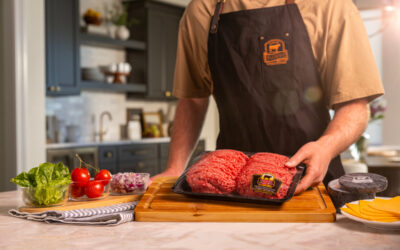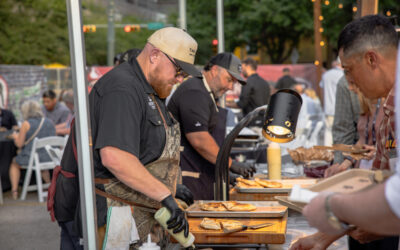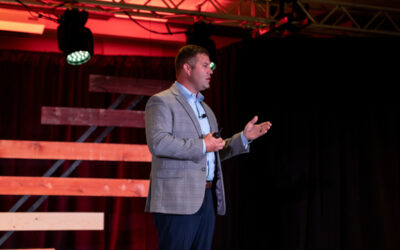
The buzz about beef
by Natalie Jones
October 14, 2019
Connect with the changing food culture to keep beef at the center of more plates. That’s advice from Anne-Marie Roerink of 210 Analytics, who spoke at the late-August Feeding Quality Forum in Amarillo.
“We can elevate the profile of beef from a health perspective, from a nutrition, from animal welfare, impact on the environment and everything else,” she said.
Retailers, “key partners with the meat industry,” especially follow Roerink’s annual “Power of Meat” surveys. The latest noted 86% of Americans consider themselves “meat eaters.”
Old news to the national media, however.
“The biggest media debate right now is on plant-based eating,” she said. “To meat or not to meat.” Her annual survey identified minor diet categories of “flexitarian” (mostly plant-based with occasional meat) and the increasingly “hip” vegan.
But headlines don’t reflect the trendlines, Roerink said. Meat sold at retail adds up to $90 billion, while plant-based alternatives linger below $1 billion. Meat sales would climb if younger shoppers gain kitchen confidence and begin to stock up.
“One of our biggest issues in the meat industry is the fact that people’s refrigerators and freezers are empty,” she said. “We need to get people back to planning and being part of their inspiration to get meat into their fridge, on their weekly menus.”
Consumers are uncomfortable shopping for meat and trying to prepare beef, so they only buy enough for one meal or a few days at a time.
Generations Y (“millennials”) and Z rely on brands to add confidence, and Roerink says that’s an opportunity for premium leaders such as the Certified Angus Beef ® brand.

“Where millennials have no knowledge base, they trust the brands that deliver,” she said. “And as for getting people to buy more beef more often, there’s no better trigger than a positive eating experience.”
New technology helps the young shoppers who grew up with it, but everything is connected.
Nutrition, emotional and physical wellness all ties back to food as consumers focus on wants versus needs, Roerink said. They look at product attributes, transparency and convenience.
“The instant pot and air fryer are helping millennials expand their culinary comfort zones,” she said, to prepare more beef items than just the few they’re buying now because of the variety they offer.
“Working together as an industry, we can get in on the ground level of that new technology and really tie our beef items in with that as well,” Roerink said.
Consumers doubt beef sustainability and production practices because “all they hear is everything we do wrong.” She said cattlemen still enjoy a high level of trust, however and need to “talk about all we do right,” and point out facts such as 99% of households consume meat.

“Get active on social media and talk to people about how you raise your animals and how your family is involved, or invite your neighbors over for a tour of the ranch,” Roerink said, noting a transition from linear to circular food chains with more consumer input at every link.
European retail meat trends often come to America 10 years later, she said. Across the Atlantic, plant-based items have their own section, earned from environmental benefit claims. Stores feature a wider variety of choices than in the U.S., but she said those trends are coming here.
A meat specialist in The Netherlands told Roerink, “Trust me, I fought it as long as I could. But once that sign was in there I just couldn’t fight it any more…we realized that by embracing the fact that some people want a plant-based alternative, we actually did better in meat. My meat sales are actually up.” Barbecue suggestions include meat, fish and vegetarian.
“Sometimes we have to keep an open mind in order to still be on the plate—even a blended item like a mushroom burger is still 75% beef—we can meet the consumer a little bit halfway,” she said, envisioning a future where “revenue is the reward for doing things right. And the right thing means looking at how society is changing, and changing with it.”
Download Roerink’s presentation and find more Feeding Quality Forum coverage here.
you may also like
Success, Despite Challenges
Today’s market is complex and competitive. The collective effort of stakeholders across the supply chain positions Certified Angus Beef to meet the record demand for premium beef moving forward. Signals across the beef industry are clear and Angus farmers and ranchers seeking high-quality genetics that deliver premium beef are producing a product in high demand.
Keep the Supply Coming
A record-high 800 registrants from 17 countries gathered in Austin, Texas, to learn more about CAB, become inspired by the culinary work of chefs and pitmasters, and celebrate sales and production success. But at the forefront: supply and demand, a reflection of the chaotic past year, and preparing for what’s ahead.
Consumer Demand, Power of Quality
Demand for high-quality beef persists. But with that demand comes challenges. From tight cattle supplies to higher costs and increasing pressure on retailers to deliver a consistent eating experience, the pressure is on. David O’Diam, CAB VP of retail, addressed the current retail beef environment, highlighting both opportunities and challenges in today’s marketplace.



